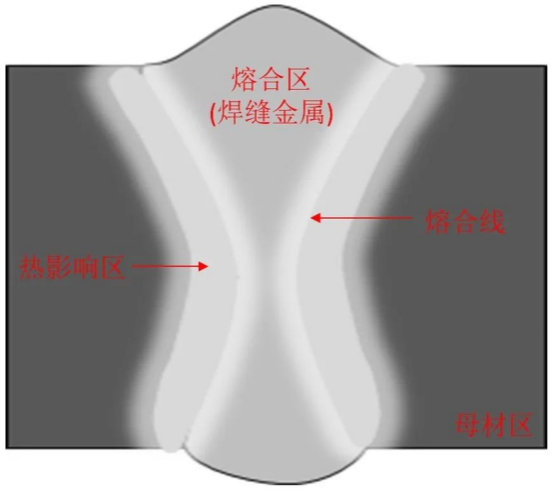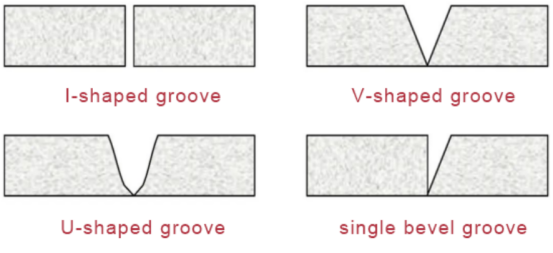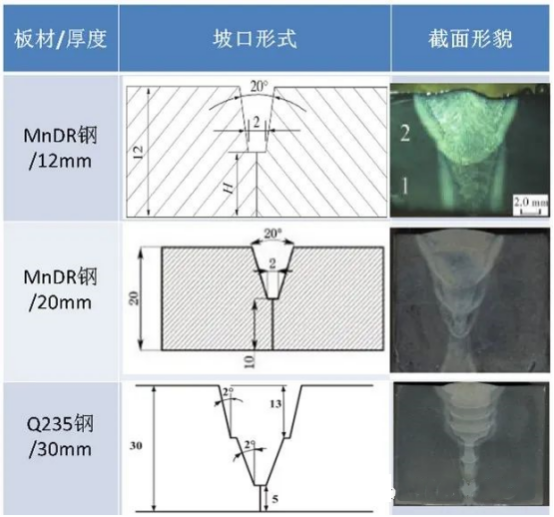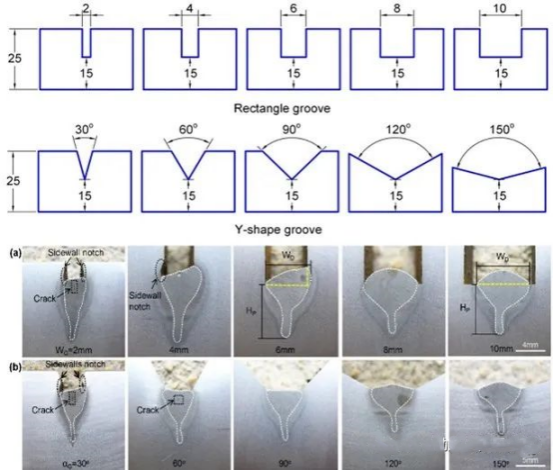01 What is a welded joint
A welded joint refers to a joint where two or more workpieces are connected by welding. The welded joint of fusion welding is formed by local heating from a high-temperature heat source. The welded joint consists of a fusion zone (weld zone), fusion line, heat affected zone, and base metal zone, as shown in the figure.

02 What is a butt joint
A commonly used welding structure is a joint where two interconnected parts are welded in the same plane or arc at the midplane of the joint. The characteristic is uniform heating, uniform force, and easy to ensure welding quality.
03 What is a welding groove
In order to ensure the penetration and quality of welded joints, and reduce welding deformation, the joints of welded parts are generally pre processed into various shapes before welding. Different welding grooves are suitable for different welding methods and weldment thicknesses. Common groove forms include: I-shaped, V-shaped, U-shaped, unilateral V-shaped, etc., as shown in the figure.

Common groove forms of butt joints
04 The Influence of Butt Joint Groove Form on Laser Arc Composite Welding
As the thickness of the welded workpiece increases, achieving single-sided welding and double-sided forming of medium and thick plates (laser power<10 kW) often becomes more complex. Usually, different welding strategies need to be adopted, such as designing appropriate groove forms or reserving certain docking gaps, in order to achieve the welding of medium and thick plates. However, in actual production welding, reserving docking gaps will increase the difficulty of welding fixtures. Therefore, the design of the groove becomes crucial during the welding process. If the groove design is not reasonable, the stability and efficiency of welding will be adversely affected, and it also increases the risk of welding defects.
(1) The groove form directly affects the quality of the weld seam. Suitable groove design can ensure that the welding wire metal is fully filled into the weld seam, reducing the occurrence of welding defects.
(2) The geometric shape of the groove affects the way heat is transferred, which can better guide heat, achieve more uniform heating and cooling, and help to avoid thermal deformation and residual stress.
(3) The groove form will affect the cross-sectional morphology of the weld seam, and it will lead to the cross-sectional morphology of the weld seam being more in line with specific requirements, such as weld penetration depth and width.
(4) A suitable groove form can improve the stability of welding and reduce unstable phenomena during the welding process, such as splashing and undercut defects.
As shown in Figure 3, researchers have found that using laser arc composite welding (laser power 4kW) can fill the groove in two layers and two passes, effectively improving welding efficiency; A defect free welding of 20mm thick MnDR was achieved using a three-layer laser arc composite welding (laser power of 6kW); Laser arc composite welding was used to weld 30mm thick low-carbon steel in multiple layers and passes, and the cross-sectional morphology of the welded joint was stable and good. In addition, researchers have found that the width of rectangular grooves and the angle of Y-shaped grooves have a significant impact on the spatial constraint effect. When the width of the rectangular groove is ≤ 4mm and the angle of the Y-shaped groove is ≤ 60 °, the cross-section morphology of the weld seam shows central cracks and side wall notches, as shown in the figure.

The Effect of Groove Form on the Cross Section Morphology of Welds

The Influence of Groove Width and Angle on the Cross Section Morphology of Welds
05 Summary
The selection of groove form needs to comprehensively consider the requirements of the welding task, material characteristics, and the characteristics of the laser arc composite welding process. Proper groove design can improve welding efficiency and reduce the risk of welding defects. Therefore, the selection and design of groove form is a key factor before laser arc composite welding of medium and thick plates.
Post time: Nov-08-2023
















